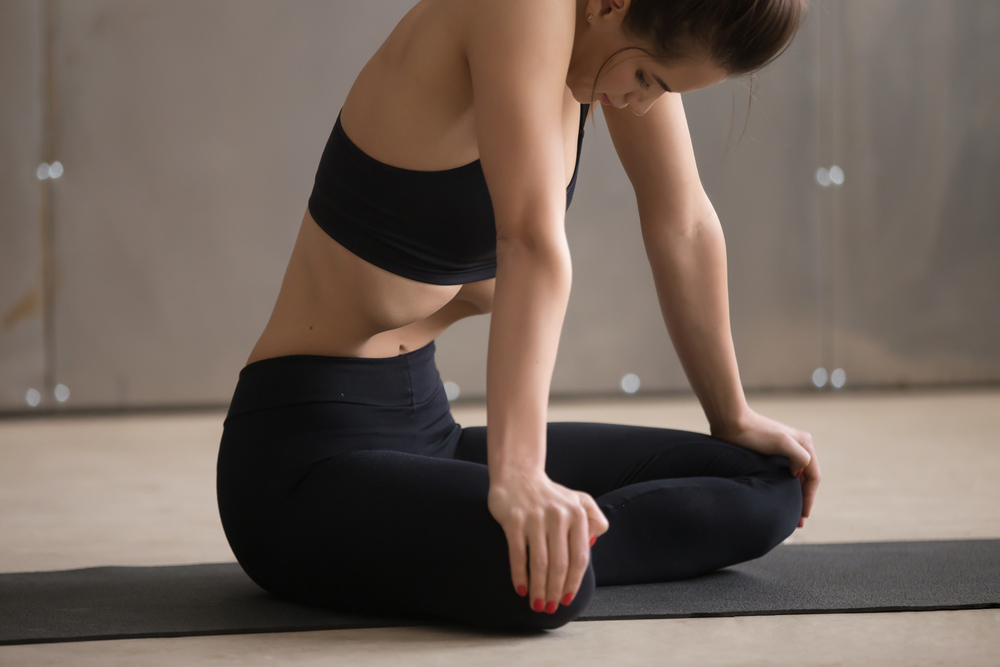Bandhas (Body Locks)
The bandhas are locks or seals applied to muscles of your body so that your energy gets channeled correctly during yoga practice. Prana (life force energy) is directed downward while apana (eliminating force) is brought up to meet it. When the two opposing forces of prana and apana are consciously balanced in the body by use of the bandhas, the kundalini energy gently begins to rise.
When you apply the bandhas correctly and at the right time, you begin to clear blocked energy and allow the flow to take its natural course through your physical and subtle bodies. As your internal energy flows more freely, you will experience greater balance in your life. You may also notice that you have clear insights into your authentic Self and core values.
The three main bandhas used in Kundalini Yoga classes are:
Neck Lock (jalandhar bandh):
Jalandhar bhand is the most basic and general lock. When you apply neck lock you open spinal column allowing energy to flow freely past neck to crown chakra. Jala means brain and dhar is open gate. Yogi Bhajan and the yogis before him taught that neck lock helps the “nectar” (hormonal secretions from the pituitary (nectar of the moon), pineal, and hypothalamus) from dispersing too quickly from the brain. Applying the lock creates a synergistic effect between the glands.
- Begin by sitting with the spine straight.
- Lift chest or heart center up and out.
- Gently open the back of the neck by pulling chin downward, keeping the head level.
- Relax the face and neck muscles.
Benefits:
- Seals energy created in the upper area of the brain stem.
- Helps stabilize blood pressure and minimize dizziness
- Reduces outside distractions from sensory system

- Helps balance thyroid and parathyroid glands
The Knot of Shiva
Kundalini yoga teaches that jalandhar bhand, when done consciously,“unties the knot of Shiva.” Shiva’s “knot” sits at the brow point. When the energy of this knot is released, you experience that which is beyond time and space. This is the state of timelessness and non-duality of your soul and Divine essence.
Diaphragm Lock (uddiyana bandh):
Your diaphragm muscle create both a physical and energetic barrier between your heart center (4th chakra)and your torso below or lower triangle (chakras 1-3). The heart is the pivot point between your lower instinctual self and your higher nature or consciousness.
Uddiyana bandh evokes the lower energy from abdomen to rise into upper thorax. Uddiyana comes from the Sanskrit phrase “to fly up.” The diaphragm lock evokes the lower energy from the abdomen to rise up into the upper thorax.
- Begin by sitting comfortably and inhale deeply, then exhale completely (only done on empty stomach).
- While the breath is exhaled, pull the abdominal region, especially above the navel point, up and towards the spine. Keep chest up and lifted.
- Press lower thoracic and lumbar spine forward.
Benefits:
- Massages intestines and heart muscles.
- Enhances anti-aging by stimulating internal cleansing.
- Fire element at the navel point (3rd chakra) is stimulated and heart center opens. Improved emotional states of compassion and kindness become more accessible.
The Knot of Vishnu
Kundalini yoga teaches that uddiyana bhand, when done consciously,“unties the knot of Vishnu.” Vishnu’s knot is located at the heart chakra. Also think of the rib cage, lungs, and thymus gland as part of this area. Once opened, the energy is free to flow and you feel more light-hearted and feel connected to the larger cosmos.
Root Lock (mulbandh):
Root Lock acts as a hydraulic lock at the base of the spine and balances the energies of the lower 3 Channels excess sexual energy into its creative as
pects. Root lock is performed by lifting the muscles in the pelvic floor, more specifically:
- Begin by contracting the muscles of the anal sphincter.
- Contract the area around the genitals as if trying to stop the flow of urine.
- Contract the muscles around the navel point by pulling them in and up.
Together these three actions constitute root lock.
Benefits:
- Primary benefit is to bring apana (up to the navel from the root chakra where it is mixed with prana.
- Stimulates the flow of spinal fluid.
- Massage point for liver, kidneys, and spleen.
- Aids digestion.
The Knot of Brahma
Kundalini yoga teaches that mulbandh, when applied consciously, “unties the knot of Brahma.” Brahma is located at the root (1st)chakra, at the base of your spine. When the knot is untied and the energy is flowing smoothly, you feel balanced and free from your attachments to form and the senses.

The Great Lock (mahabandh)
Mahabandh is achieved when these three locks are applied together. Certain Kundalini yoga exercises will call for this great lock, ensure you engage mahabandh as directed by a certified teacher and on an empty stomach.

